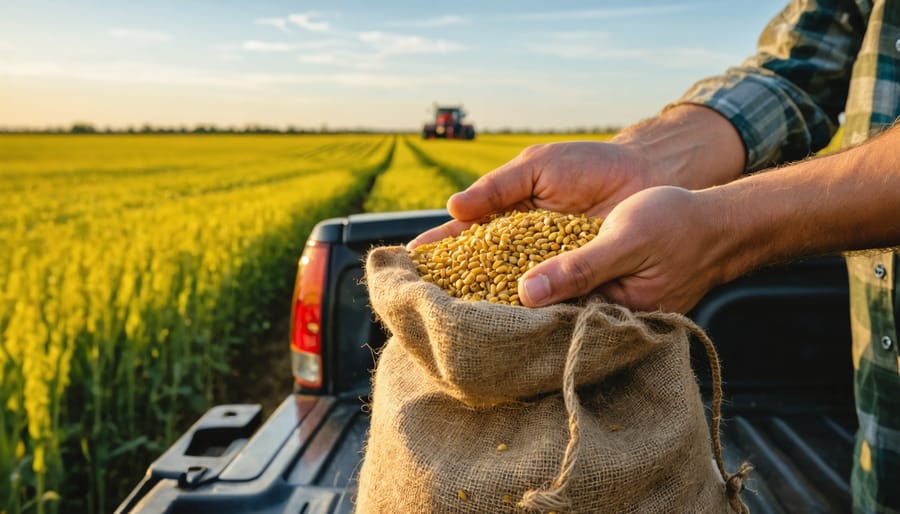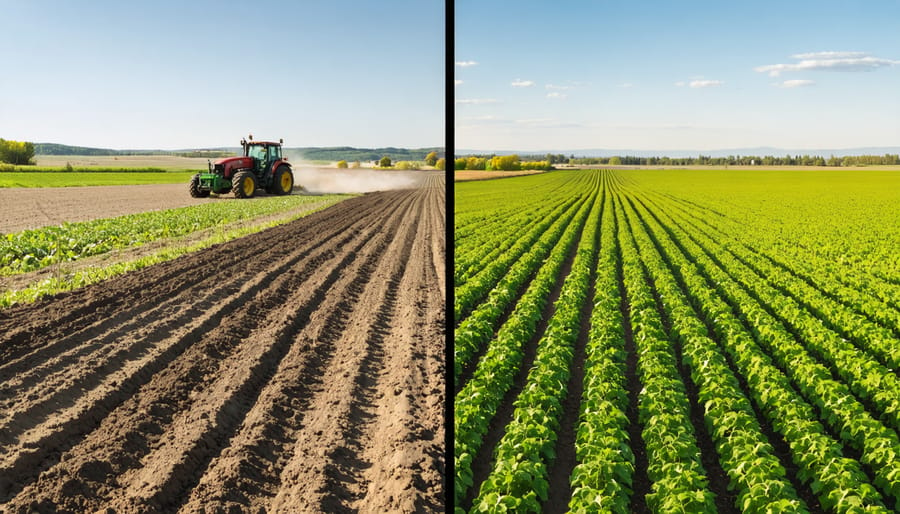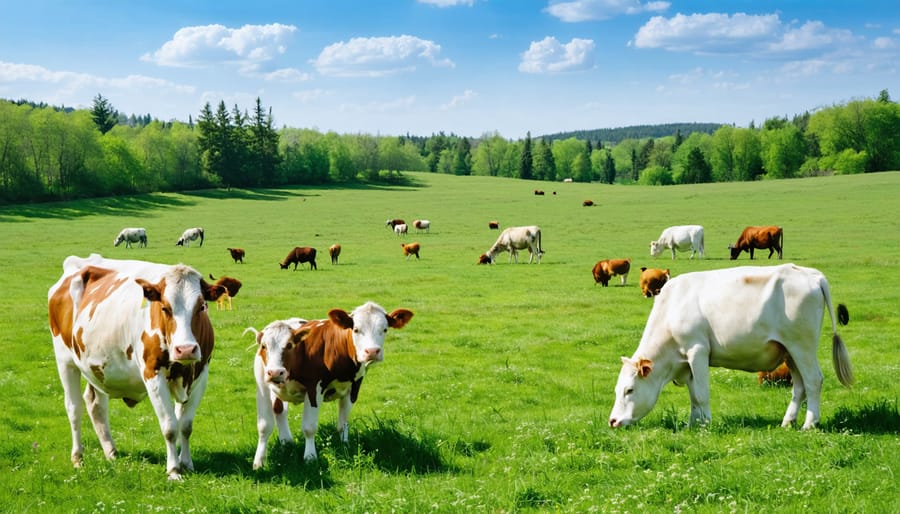Canadian farmers are revolutionizing pest control through nature-based solutions that protect both crops and ecosystems. By integrating biological pesticides derived from neem oil, beneficial insects, and microbial formulations, growers across Alberta and British Columbia have reduced chemical inputs by up to 40% while maintaining crop yields. These eco-friendly alternatives not only meet stringent Canadian organic certification standards but also offer cost-effective protection against common agricultural pests.
Recent field trials at the University of Alberta demonstrate how targeted applications of botanical pesticides, combined with companion planting strategies, create resilient farming systems that support beneficial insect populations while deterring harmful pests. For farmers transitioning to sustainable practices, these proven methods offer a practical pathway to reduce environmental impact without compromising productivity.
The shift toward eco-friendly pest management aligns with growing consumer demand for organic produce and strengthens Canada’s position as a leader in sustainable agriculture. By embracing these innovative solutions, farmers are protecting their immediate crop yields while investing in the long-term health of their soil and surrounding ecosystems.
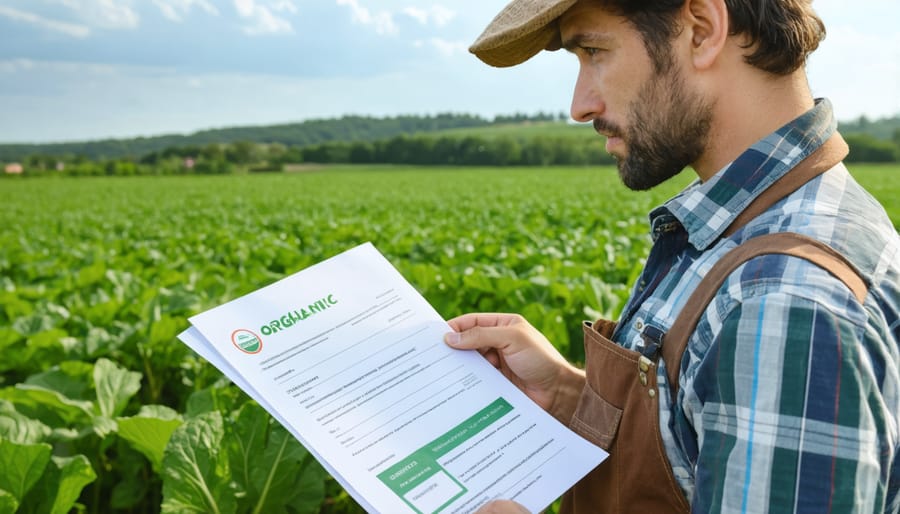
Current Policy Framework for Organic Pesticides in Alberta
Provincial Guidelines and Standards
In Alberta, eco-friendly pesticide regulations are governed by a comprehensive framework that aligns with national organic certification requirements. The Provincial Agricultural Pests Act works in conjunction with the Environmental Protection and Enhancement Act to ensure sustainable pest management practices while protecting local ecosystems.
Farmers must adhere to specific guidelines when using biological and naturally-derived pesticides, including mandatory buffer zones between treated areas and water sources. These zones typically range from 10 to 30 metres, depending on the application method and product used.
The Alberta Organic Producer Association (AOPA) provides additional oversight, requiring detailed documentation of all pest management strategies. This includes maintaining spray logs, conducting regular soil testing, and implementing integrated pest management practices before considering pesticide use.
Recent updates to provincial standards have introduced a tiered approach to pest control, emphasizing prevention first, followed by biological controls, and using approved organic pesticides only as a last resort. These measures ensure Alberta remains at the forefront of sustainable agricultural practices while supporting farmers in their transition to eco-friendly pest management solutions.
Federal Compliance Requirements
When implementing eco-friendly pesticides in Canadian agriculture, farmers must comply with the Canadian Organic Standards and federal regulations. These standards outline specific requirements for permitted substances and application methods, ensuring both environmental protection and food safety.
The Pest Management Regulatory Agency (PMRA) oversees the registration and regulation of all pesticides, including eco-friendly alternatives. Organic producers must maintain detailed records of all pest management practices and substances used, which are subject to annual inspections by certification bodies.
For Alberta farmers, provincial regulations work in conjunction with federal requirements. The key is understanding which bio-based pesticides are approved for use in organic production. Currently, approved substances include neem oil, diatomaceous earth, and specific botanical extracts.
To maintain certification, farmers must demonstrate that preventive measures and cultural controls were attempted before using even approved pesticides. This approach aligns with the principles of integrated pest management while ensuring compliance with national organic regulations.
Natural Alternatives Making Waves in Alberta
Plant-Based Solutions
Nature offers a wealth of solutions for pest management that align perfectly with organic farming principles. Among the most effective approved eco-friendly pesticides are botanical extracts that have been used successfully by generations of Canadian farmers.
Neem oil, derived from the neem tree, has proven particularly effective in Alberta’s market gardens, controlling over 200 species of insects while remaining safe for beneficial pollinators. Local farmers report excellent results using neem-based solutions for managing aphids and spider mites in greenhouse operations.
Pyrethrin, extracted from chrysanthemum flowers, offers quick-acting pest control that’s especially useful for root vegetable crops. Saskatchewan farmer Marie Thompson shares, “We’ve successfully used pyrethrin to protect our carrot crops without compromising our organic certification.”
Essential oils like rosemary, thyme, and peppermint serve as effective deterrents for many common pests. These oils can be mixed with water and natural surfactants to create protective sprays that are particularly effective in smaller operations and high-value crops.
Garlic and hot pepper extracts have shown promising results in deterring larger pests and certain insects. These locally-sourceable solutions are cost-effective and can be prepared on-farm, making them particularly attractive for small to medium-sized operations.
When implementing botanical pesticides, timing and concentration are crucial. Early morning or late evening applications typically yield the best results, and regular monitoring helps determine optimal application schedules. Remember to rotate between different botanical solutions to prevent pest resistance and maintain effectiveness throughout the growing season.
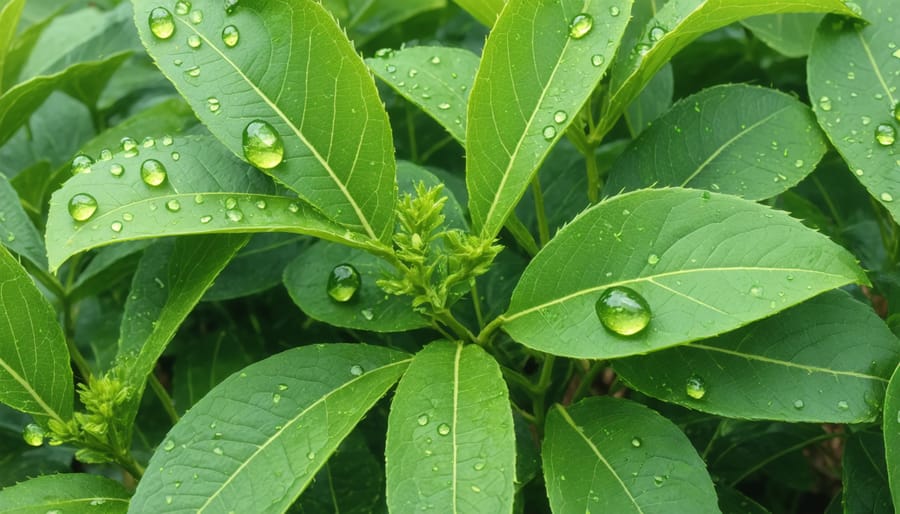
Biological Control Methods
Biological control methods represent one of the most sustainable approaches in eco-friendly pest management, particularly well-suited to Alberta’s diverse agricultural landscape. These methods harness nature’s own defense mechanisms by introducing beneficial organisms that help control pest populations naturally.
In the Prairie region, ladybugs have proven especially effective against aphids in canola fields, with local farmers reporting up to 60% reduction in aphid populations when properly implemented. Parasitic wasps, particularly the species Trichogramma, have shown remarkable success in controlling moth larvae in vegetable crops, offering protection without chemical residues.
Beneficial nematodes are gaining popularity among Alberta greenhouse operators, especially for controlling soil-dwelling pests. These microscopic organisms target specific pests while leaving beneficial insects unharmed. Local success stories include several organic market gardens near Edmonton that have effectively managed root maggots using nematode applications.
Microorganisms play an equally important role. Bacillus thuringiensis (Bt), a naturally occurring soil bacterium, has become a staple in organic farming across Canada. When applied properly, Bt provides excellent control of caterpillars while being safe for humans and beneficial insects.
To implement biological controls effectively, timing is crucial. Release beneficial insects early in the growing season, ideally when pest populations are just beginning to build. Many Alberta agricultural extension offices maintain monitoring networks to help farmers determine optimal release times.
Remember to create suitable habitat for beneficial organisms by maintaining diverse vegetation around field edges and incorporating flowering plants that provide nectar and pollen sources. This approach not only supports introduced biological controls but also encourages naturally occurring beneficial insects to thrive.
Implementation Success Stories
Small-Scale Success
The Pedersen family farm in Olds, Alberta, offers an inspiring example of successful eco-friendly pesticide implementation. Sarah and John Pedersen, third-generation farmers managing 80 hectares of mixed crops, made the transition to organic pest control methods five years ago.
“We started small, testing natural pest deterrents on just 10 hectares of our canola fields,” Sarah explains. “The results were so encouraging that we gradually expanded the program across our entire operation.”
The Pedersens now use a combination of companion planting, beneficial insects, and botanical pesticides derived from neem and pyrethrum. Their innovative approach includes strategic planting of marigolds and lavender around field perimeters, which naturally repel many common crop pests.
In their first year of full implementation, the Pedersens experienced a modest 5% decrease in yield but saw a 15% premium on their organic produce prices. By the third year, their yields matched conventional levels, while maintaining the price premium and reducing input costs by 30%.
Their success has inspired neighbouring farms, creating a local network of knowledge-sharing. The Pedersens now host monthly workshops for other Alberta farmers interested in eco-friendly pest management strategies. “It’s about finding what works for your specific situation,” John emphasizes. “Start small, learn from your experiences, and build from there.”
Large Operation Transition
The Martin Family Farm in Lethbridge, Alberta, stands as a compelling example of successful transition to eco-friendly pesticides across their 2,000-hectare operation. In 2018, the Martins began gradually shifting from conventional pesticides to biological alternatives, completing the transition over three growing seasons.
Their systematic approach started with a 200-hectare test plot of canola, where they implemented beneficial insect releases and botanical-based pest deterrents. After documenting a mere 4% reduction in yield but achieving a 30% reduction in input costs, they expanded the program across their entire operation.
Key to their success was partnership with local agricultural extension services and careful monitoring of pest populations. The Martins installed insect monitoring stations every 40 hectares and worked closely with professional agronomists to time their biological control applications effectively.
Today, the farm uses a combination of companion planting, predatory insects, and plant-derived pesticides to manage crop threats. Their soil health has improved significantly, with organic matter increasing from 2.8% to 4.2% over four years. Perhaps most notably, their produce now commands premium prices in organic markets, offsetting any initial transition costs.
The Martin’s experience has inspired neighbouring farms, with twelve operations in Southern Alberta now following their model. Their success demonstrates that large-scale adoption of eco-friendly pest management is both practical and profitable in the Canadian prairie context.
Economic Considerations and Support Programs

Cost-Benefit Analysis
The shift to eco-friendly pesticides involves careful financial planning and consideration of both short and long-term impacts. While initial costs may be higher compared to conventional pesticides, many Alberta farmers report significant long-term savings and market advantages.
According to a 2022 study by the Prairie Organic Development Fund, eco-friendly pesticides typically cost 15-30% more upfront than conventional alternatives. However, these costs are often offset by premium pricing for organic produce, which commands 20-40% higher market values.
Local farmer Sarah Thompson from Lethbridge shares, “Our initial investment in bio-based pesticides was $12,000 more than conventional methods, but we’ve seen a 25% increase in profit margins through organic certification and reduced input costs over three years.”
Key financial benefits include:
– Reduced soil remediation expenses
– Lower environmental compliance costs
– Access to organic market premiums
– Eligibility for sustainable agriculture grants
– Decreased worker safety management costs
The return on investment typically becomes positive within 2-3 growing seasons. Many farmers report additional savings through improved soil health, reduced water usage, and decreased equipment maintenance needs. Government incentives, including the Canadian Agricultural Partnership program, can help offset transition costs through grants ranging from $5,000 to $50,000.
When factoring in environmental and health benefits, the long-term economic advantages of eco-friendly pesticides make them an increasingly viable option for Canadian farmers.
Government Support Initiatives
Canadian farmers transitioning to eco-friendly pesticides can access various government initiatives and financial support programs. Agriculture and Agri-Food Canada offers substantial funding through the Agricultural Clean Technology Program, providing up to $2 million for projects involving sustainable pest management solutions. The Canadian Agricultural Partnership also delivers comprehensive support for organic farmers looking to adopt environmentally friendly practices.
In Alberta, the Environmental Farm Plan (EFP) program provides cost-sharing opportunities, covering up to 70% of expenses when implementing eco-friendly pest management systems. Farmers can receive funding for soil testing equipment, biological control agents, and specialized application technology. The Scientific Research and Experimental Development (SR&ED) tax incentive program offers additional benefits for farmers investing in innovative pest control methods.
Local agricultural extension offices provide free consultations and technical support to help farmers navigate these programs. The Canadian Agricultural Strategic Priorities Program (CASPP) offers grants specifically for group projects that advance sustainable agriculture practices within communities. Resources include workshops, demonstration sites, and mentorship programs connecting experienced organic farmers with those beginning their transition to eco-friendly pest management.
Remember to check application deadlines and eligibility requirements, as programs are updated annually. Your local agricultural representative can help identify the most suitable funding opportunities for your specific situation.
The transition to eco-friendly pesticides represents a significant step forward for Canadian agriculture, offering both environmental benefits and market opportunities. Throughout this guide, we’ve explored natural alternatives, regulatory requirements, and the economic advantages of sustainable pest management practices.
For Alberta farmers considering this transition, the path forward is clear and achievable. Start by conducting a thorough assessment of your current pest management needs and gradually introduce natural alternatives in small test plots. Connect with local agricultural extension offices and organic farming associations, which offer valuable resources and mentorship programs for transitioning farmers.
Remember that success stories from fellow Canadian farmers demonstrate the viability of eco-friendly pest management across various crop types and farming scales. The initial investment in sustainable practices often pays off through premium pricing for organic products and reduced input costs over time.
Take advantage of available government programs supporting sustainable agriculture transitions, including grants and technical assistance. Consider joining local farmer networks to share experiences and best practices with others who have successfully made the switch.
By embracing eco-friendly pesticides, you’re not just protecting your soil and local ecosystems – you’re positioning your farm for long-term success in an increasingly environmentally conscious market. Start small, document your progress, and remember that every step toward sustainable pest management contributes to the future of Canadian agriculture.


